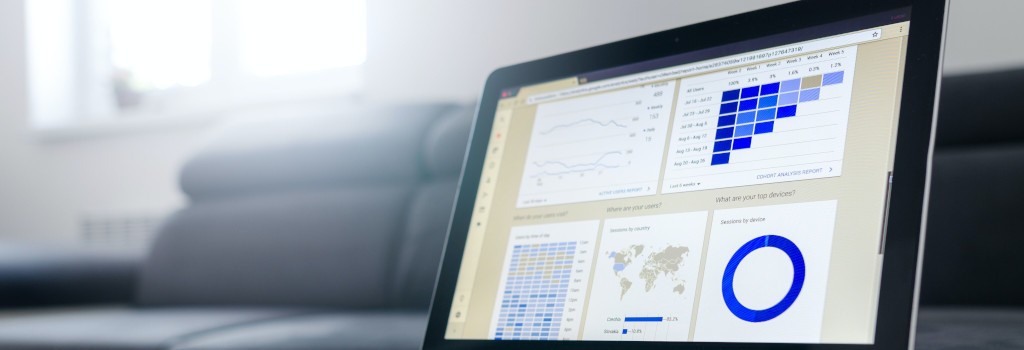
Keeping the content lifecycle spinning
Turning data into media coverage using surveys, aka research, is back in the news cycle again, almost a year on since we covered this topic in one of our IBA blogs on finding the value in research-led content marketing.
But this time we’re not looking at how to gather the research. We’re delving into how to generate media coverage and increase the content lifecycle from client research that supports their corporate messaging. Research and data make for great content material, but without a strategy in place to grab the attention of journalists, the data is made redundant.
Insightful research findings can form an excellent and credible peg to hang a thought leadership article, blog, or interviews response. What we’re looking at is that making sure the data can be used to generate all sorts of content and keep the content lifecycle going time after time – For example here’s some sample headlines: Research identifies laggards/winners in xx industries, geographies – there’s 6 stories for a start.
Often PR and Marketing pros are challenged by clients to maximize the value of the research they have gathered.
Short, snappy content wins the attention of time-pressed journalists
According to a recent MuckRack report, journalist workloads have increased significantly. This is where attention-grabbing content that resonates with a journalist’s audience and is easy to digest will help you stand out from the crowd.
Journalists are under tight deadlines so they can’t be trawling through a mound of data – so presenting your client’s research in an eye-grabbing way is crucial. But how can PR and Marketing pros come up with innovative ways to present this data? A picture’s worth a thousand words? The use of infographics has been on the rise with 61% of B2B marketers utilizing this tactic in the last 12 months. A form of presenting data in images or graphs which can easily be interpreted and resonate across many different regions and industry markets is crucial.
Here at IBA, we’ve seen the positive impact an attention-grabbing image or infographic can have when paired with new survey findings. Our data movement client’s survey press release with an eye capturing image for instance, generated eight placements in technology and finance publications across Europe and North America. A picture really can really say a thousand words!
Repurposed assets can maximize the content lifecycle
So, you’ve pitched out your press release and secured numerous placements hits for your client but what comes next? PR and Marketing pros can’t rest on their laurels, when you have valuable research at your fingertips. The next step is to keep the content lifecycle wheel rolling. It’s time to get the thinking caps on as to how this data can be turned into other assets which will peak the interest of even more journalists.
The information used in the initial press release can be a great base for forming the next which touches on a range of industry pain points can be the perfect hook for drafting many forms of content that will capture interest from journalists.
We quite often receive research-led press releases from our clients and this kickstarts our thinking brains into seeing how we can utilize the data and make different content forms. In one case we managed to utilize one set of client research in three different forms – from releasing the key findings in a press release, to using it to form the basis of our client’s next thought leadership article and finally using the stats to provide a written Q&A opportunity.
Refresh, Repeat, and Reuse
Surveys are a great form of evergreen content. So, PR and marketing pros should not be disheartened if the initial coverage for their thought leadership content for a client is not as expected. Crucial data insights are a great way to add new life to the content and to keep the content lifecycle turning when a topic comes back into the news cycle.
When a thought leadership article is initially a bit tough to sell when first pitched out, survey data can provide the perfect peg to hang a story on that maybe it wasn’t originally designed to support. This gives the thought leadership article the perfect hook to be pitched out again and capture the journalist’s attention to review your article.
This was certainly the case for our enterprise software client when an EUR thought leadership article initially received a few reviewers but nothing groundbreaking – but the best was certainly to come! A couple months later, we gave the article a second chance by adding new research findings to refresh the material – focusing on the key challenges that our target media’s audiences were struggling with and looking for solutions to resolve them. Placement rolled in!
You can show me the data but what does it say? Deployed effectively, research can be a crucial content generation tool
So, what are the key takeaways? Journalists are under increasing time pressures, so getting your story to stand out with an engaging infographic will be key to really capture their attention. But don’t stop here. Remember, keep that content wheel turning. Research can trigger all sorts of content as we said – articles, blogs, comments, Q/As.
And finally, don’t get disheartened if you don’t get initial coverage. The news cycle rolls around, the same topic maybe with a slightly different twist becomes this month’s hot topic. (Just like the topic of this blog)!
Sam Walker is PR Executive at IBA International.

Leave a comment